The best plants for a closed terrarium are plants that thrive in warm and humid conditions. These are plants that grow in tropical terrariums. You should be looking to pick plants that help to regulate the environment’s climatic conditions such as humidity levels, temperature, and exposure to light.
Tropical plants help to keep relative humidity at an optimum level for your pet. They also provide shade for any animals you may have within the terrarium.
When setting up a closed terrarium your objective is to get plants that can thrive with little airflow, that require humid and warm climatic conditions to thrive, and that can fit within the enclosure you choose.
Table of Contents
Best Plants For A Closed Terrarium
Fern
Ferns are among the best plants for a closed terrarium as they thrive in high humidity and warm temperatures. They also do not require much light exposure. Here are some ferns that are excellent for your closed vivarium.
1. Bird’s Nest Fern

- Family: Aspleniaceae
- Biological Name: Asplenium nidus
- Plant Type: Evergreen, epiphyte
- Light Exposure: Partial & Dappled
- Potting Mix pH: <6.0
- USDA Hardiness Zone: 11a to 12b
Most ferns do not need a lot of light however, this requires a decent amount of light. The leaves of this plant are bright green and spoon-shaped. They form a rosette. The leaves are broad and as such provide cover for animals that wish to be out of sight. This is a slow-growing plant.
(source: https://plants.ces.ncsu.edu/plants/asplenium-nidus/)
2. Boston Fern
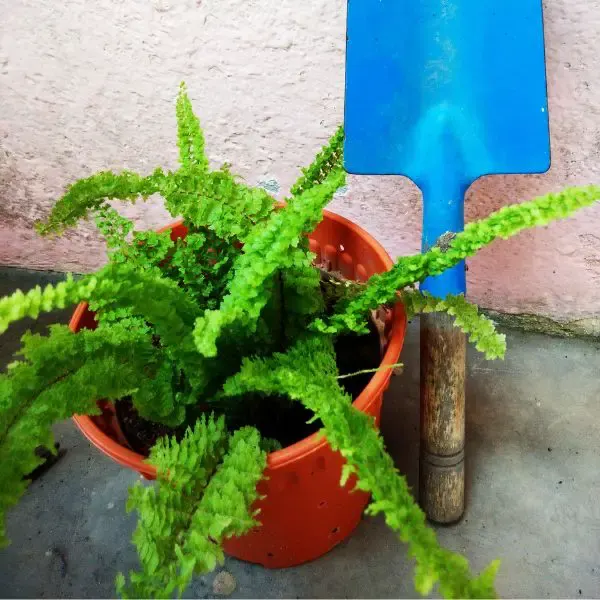
- Family: Polypodiaceae
- Biological Name: Nephrolepis exaltata
- Plant Type: Perennial, Fern
- Light Exposure: Deep shade, Dappled Sunlight
- Potting Mix pH: 6 to 6.5
- USDA Hardiness Zone: 10a to 13b
A fern is always a great way to go when you wish to add plants to your terrarium. They are messy. they also grow slowly which is excellent for a closed terrarium. The plants also provide cover for any animals you may have in the enclosure.
For small enclosures, I recommend dwarf cultivars such as the Nephrolepis exaltata ‘Fluffy Ruffles’.
(source: https://plants.ces.ncsu.edu/plants/nephrolepis-exaltata/)
3. Staghorn Fern
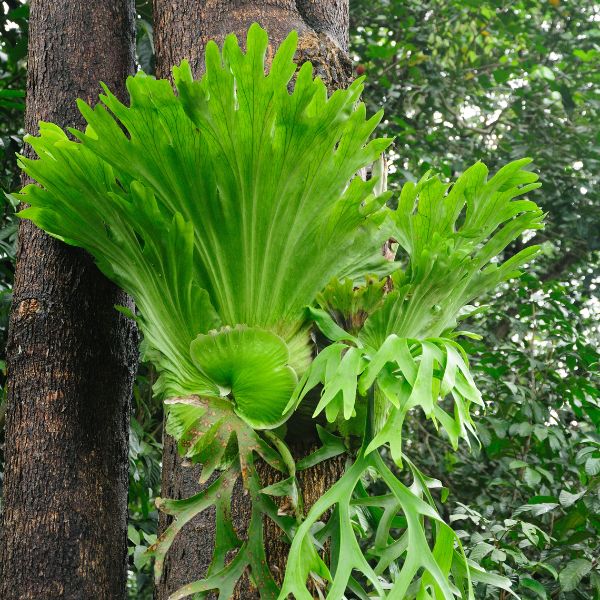
- Family: Polypodiaceae
- Biological Name: Platycerium bifurcatum
- Plant Type: Epiphytic
- Light Exposure: Partial & Dappled
- USDA Hardiness Zone: 9a to 13b
Similar to the Boston fern, the staghorn fern doesn’t require much light or care. They can grow in the parts of the terrarium that doesn’t receive a lot of sunlight.
Ficus
These plants come in many different shapes and sizes. Ficus can refer to plants such as the rubber plant which is a shrub or even the creeping fig which is a creeping vine. They are all evergreen plans that require high light exposure and a moist environment. They also provide cover for other plants that may require partial light exposure.
4. Rubber Plant

- Family: Moraceae
- Biological Name: Ficus elastica
- Plant Type: Tree
- Light Exposure: Full Sun to Partial
- Potting Mix pH: Acidic
- USDA Hardiness Zone: 10a to 12b
The rubber plant is a ficus plant. It grows like a shrub. As with most figs, it requires a container and potting mix. Ensure that the potting mix is well-draining. The leaves are dark green and the stems are brownish in color. The leaves are also thick and rubbery. The texture and appearance of the leaves give this plant its common name.
This plant is excellent for warm and humid environments.
5. Creeping Fig
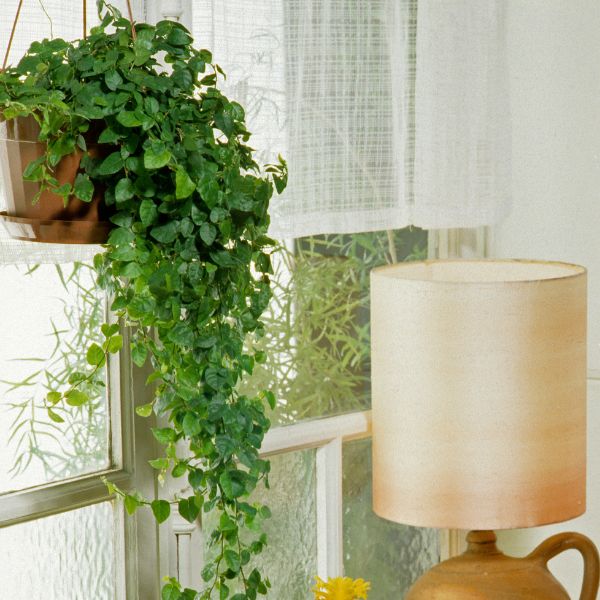
- Family: Moraceae
- Biological Name: Ficus pumila
- Plant Type: Perennial vine
- Light Exposure: Full to Partial
- Potting Mix pH: Neutral to Acidic
- USDA Hardiness Zone: 9 to 11
This plant creeps as you may have figured out it grows at a good pace and spreads across the terrarium. These plants prefer warm and humid environments. The leaves are evergreen but won’t do well in cold and dry conditions.
6. Weeping Fig

- Family: Moraceae
- Biological Name: Ficus benjamina
- Plant Type: Shrub
- Light Exposure: Partial
- Potting Mix pH: Neutral to Acidic
- USDA Hardiness Zone: 9 to 11
The weeping fig has a classic tree shape. It also produces a lot of leaves. These can act as cover for several animals and invertebrates. They can grow pretty huge but within a terrarium, their growth is greatly reduced.
They are also relatively easy to care for.
Marantaceae
These include the attractive herringbone plant. Among others. The herringbone plant is featured in this article.
7. Herringbone Plant
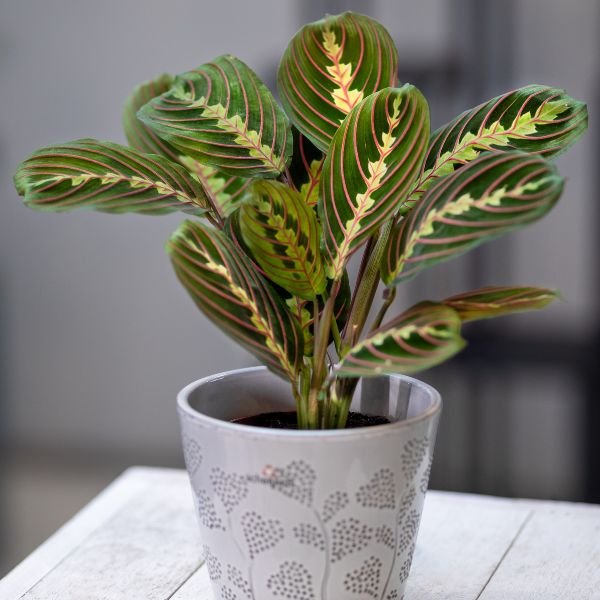
- Family: Marantaceae
- Biological Name: Maranta leuconeura
- Plant Type: Perennial
- Light Exposure: Dappled Sunlight
- Potting Mix pH: Neutral
- USDA Hardiness Zone: 11a and 11b
This herringbone is another excellent plant for warm and humid enclosures. It’s called herringbone because of the pink veins of the leaves. These resemble the bone structure of a fish such as a herring.
The rest of the leaf is dark green with a whitish-green coloration along the middle.
8. Rattlesnake Plant

- Family: Marantaceae
- Biological Name: Calathea lancifolia
- Plant Type: Perennial Evergreen
- Light Exposure: Partial
- USDA Hardiness Zone: 11a to 12b
This is another of my favorites. The plant is called the rattlesnake plant because the leaf’s shape resembles the tail of a rattlesnake. The coloration of the leaves is light green and dark green.
This plant is best suited for warm humid enclosures. If you need an enclosure for a gecko that thrives in warm humid environments, then be sure to have a rattlesnake plant in there.
Commelinaceae
9. Inchplant

- Family: Commelinaceae
- Biological Name: Tradescantia zebrina
- Plant Type: Ground Cover
- Light Exposure: Full to Partial
- Potting Mix pH: All (Acidic to Alkaline)
- USDA Hardiness Zone: 8a to 12b
This plant grows rapidly and creates an undergrowth in no time. As mentioned earlier, plants provide cover. Well, if you want a lot of cover in the terrarium, then this is the plant to go for.
Its coloration is also attractive as the vines and parts of the leaves are deep violets. Because the plant grows rapidly, you may want to trim it regularly.
This plant is excellent for warm terrariums.
Orchid
10. Jewel Orchid
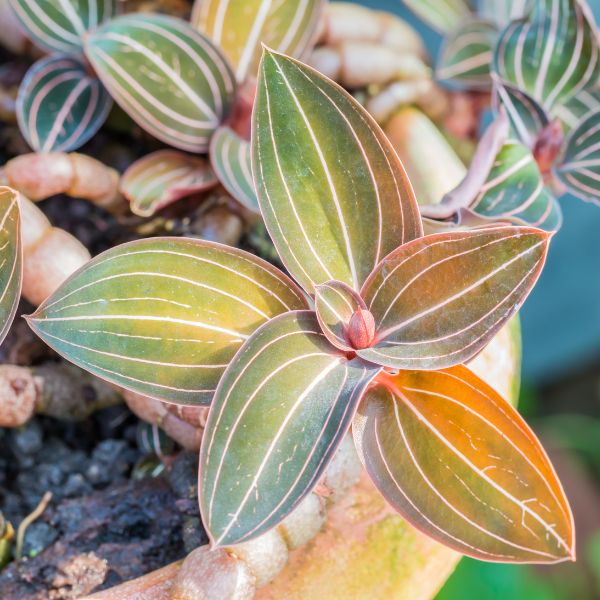
- Family: Orchidaceae
- Biological Name: Ludisia Discolor
- Plant Type: Perennial
The leaves o the jewel orchid is pretty. They are dark green with light-colored veins that form intricate patterns. They are usually referred to simply as Ludisia.
11. Pink Rock Orchid
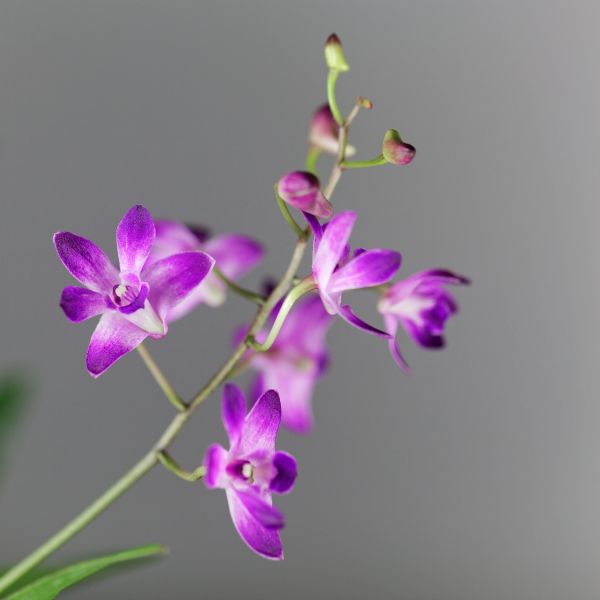
- Family: Orchidaceae
- Biological Name: Dendrobium kingianum
- Plant Type: Orchid
- Light Exposure: Partial
- Potting Mix pH: Neutral
You may want to add a few orchids to your collection. Well there are several easy to grow orchids such as the pink rock orchid. The flowes are pinkish and white.
Bromeliads
12. Neoregelia
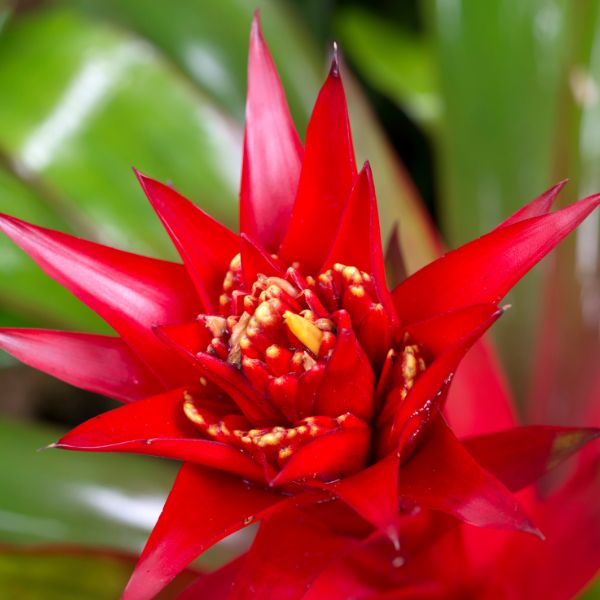
- Family: Bromeliaceae
- Biological Name: Neoregelia
- Plant Type: Epiphyte
- Light Exposure: Partial
- USDA Hardiness Zone: 11a to 11b
If you have a high terrarium if you plan on having a narrow and high closed terrarium then you should consider plants from the Genus Neoregelia. They are also excellent for dart frogs such as the golden poison dart frog.
These bromeliads display vibrant colors and the leaves are quite broad. They can be easily installed in tall terrariums as they are epiphytic. When exposed to strong light they develop vivid bright colors.
13. Cryptanthus
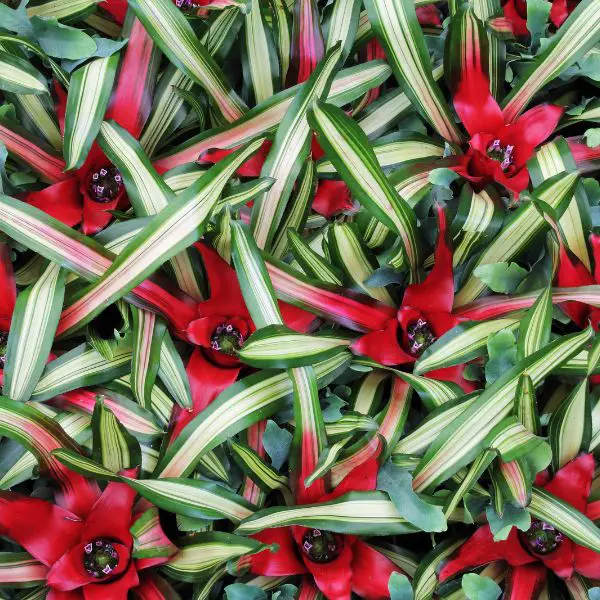
- Family: Bromeliaceae
- Biological Name: Cryptanthus bivittatus
- Plant Type: Epiphyte
- Light Exposure: Partial
- Potting Mix pH: Acidic
- USDA Hardiness Zone: 8a to 11b
Cryptanthus, also known as earth stars, are highly decorative bromeliads. The leaves of this plant form a rosette-shaped arrangement which gives it its common name. They are epiphytic and can be easily installed in high vivariums.
They require direct light they can grow quite large depending on the type.
14. Air Plants (Tillandsia)
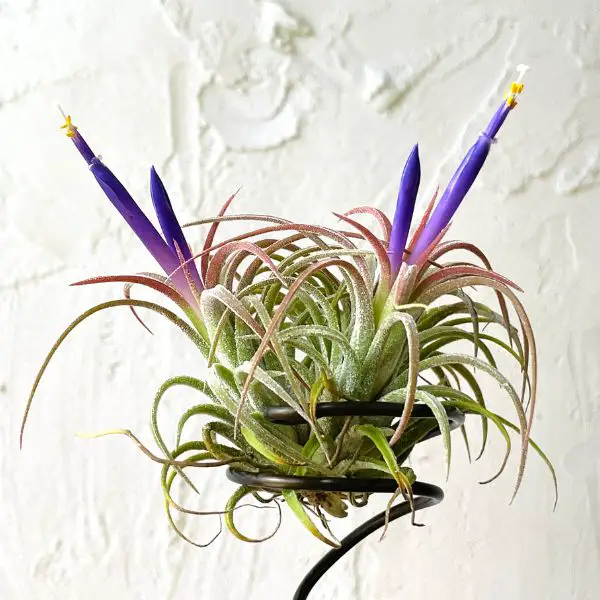
- Family: Bromeliaceae
- Biological Name: Tillandsia
- Plant Type: Epiphyte
- Light Exposure: Full to Partial
This is another excellent epiphytic plant to grow in your tall vivarium. The excellent thing about epiphytic plants is that they do not require soil or potting mix as in the wide they grow on other plants and objects such as rocks. You can also install them high up in the terrarium with no issue.
Acanthaceae
15. Mosaic Plants
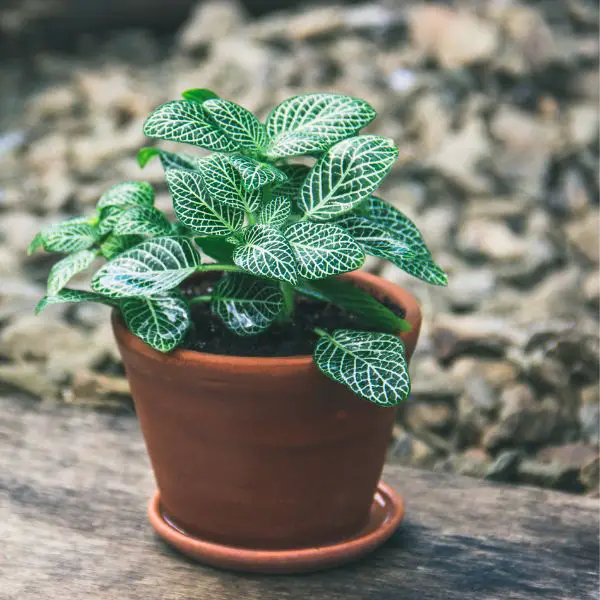
- Family: Acanthaceae
- Biological Name: Fittonia
- Plant Type: Ground Cover
- Light Exposure: Shaded
- USDA Hardiness Zone: 11a to 12b
The mosaic plant is one of my favorite closed terrarium plants. The mosaic patterns on the leaves are endearing. The leaves are dark green but the veins are whitish. It is also called the nerve plant as the veins of the leaves resemble nerve cells.
They are easy to grow and work well in most terrariums including closed ones.
Piperaceae
16. Peperomia

- Family: Piperaceae
- Biological Name: Peperomia
- Plant Type: Ground Cover
- Light Exposure: Partial
- USDA Hardiness Zone: 11a to 12b
Another excellent plant to consider is the perperomia plant. All the plants in this genus are great for your enclosure. The peperomia plan works well for both tropical and dry enclosures. Many believe that this plant will work in all types of enclosures and they may just be right.
Some popular peperomia plants include Peperomia caperata ‘Rosso’ and Peperomia albovittata ‘Piccolo Banda’. You cannot go wrong with either.
Asparagaceae
17. Snake Plant
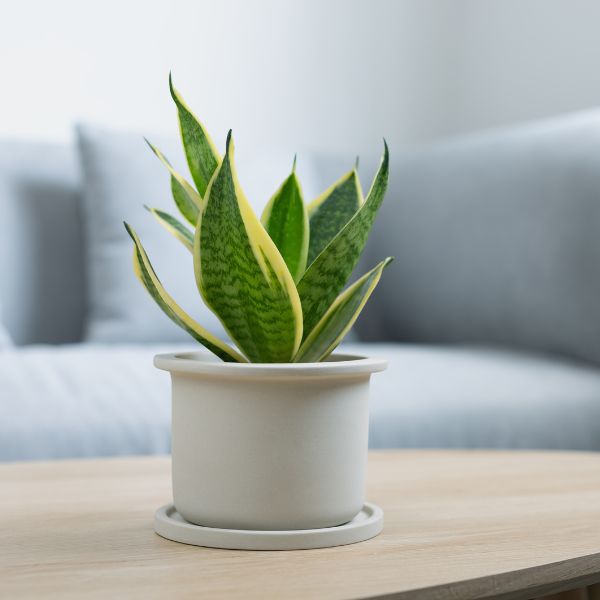
- Family: Asparagaceae
- Biological Name: Dracaena trifasciata
- Plant Type: Houseplant
- Light Exposure: Partial shade
- USDA Hardiness Zone: 10a to 12 b
The snake plant is another classic. This plant is ideal for all terrariums. They do well with high moisture and care. Alternatively, they can go months without watering making them one of the best plants for all types of enclosure. These plants thrive in most conditions and will thrive in both a dry and humid enclosure.
18. Sphagnum Moss
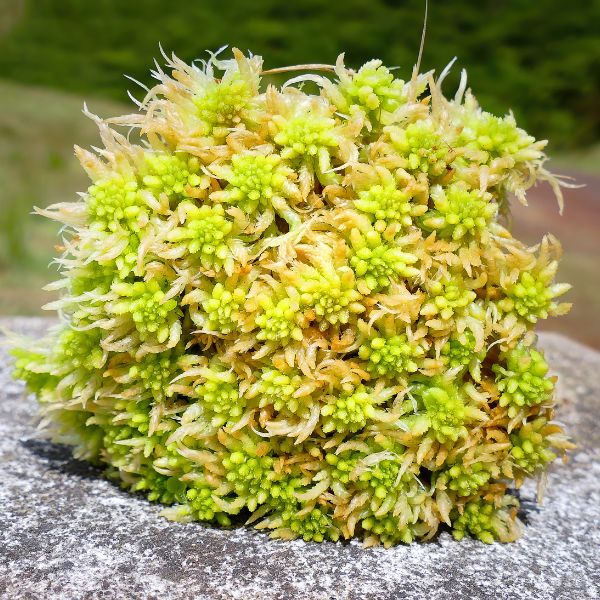
Moss is an excellent substrate for terrariums, there regulates humidity excellently and as such provides a conducive environment for other plants and even tiny animals. If you want to have as thriving closed terrarium, you must have moss in there. Sphagnum moss comes in a variety of colors and can be used to brighten up the enclosure. Typical colors include green, black, maroon to salmon pink.
The animals you may have in the terrarium can feed on it as well.
19. Pilea
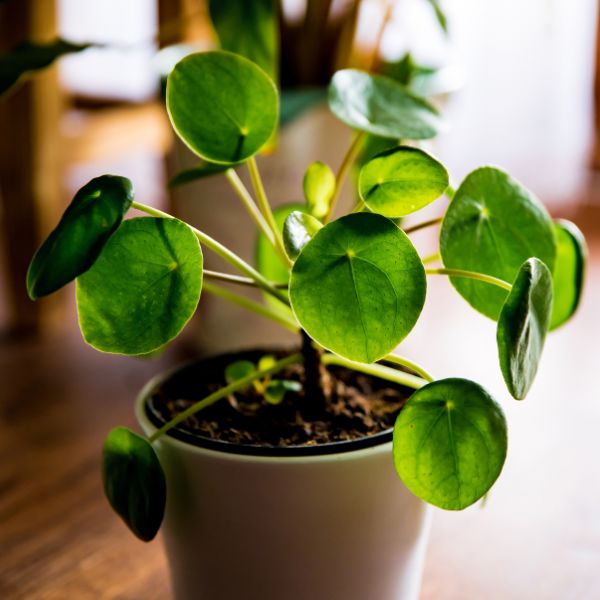
This genus contains a large variety of plants. Some of these plants are shrubs while others are creeping vines. The Pilea featured here is the aluminum plant. Other similar plants within the genus to consider include the friendship plant (P involucrata) and P. Mollis.
20. Aluminum Plant
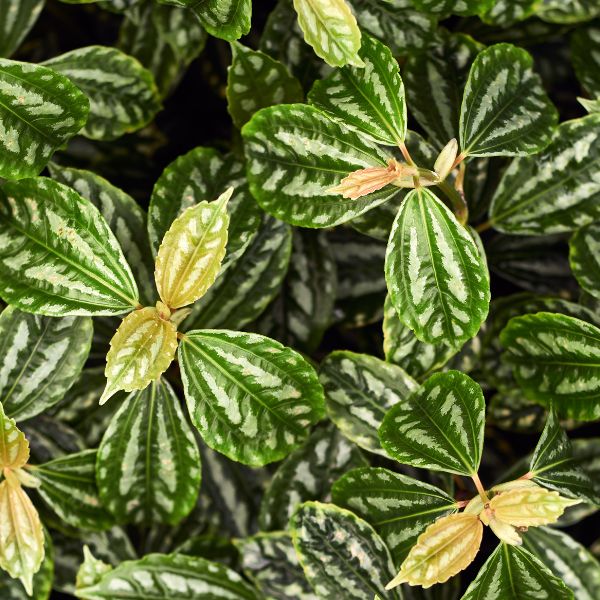
- Biological Name: Pilea cadierei
- Plant Type: Perennial
- Light Exposure: Shade
- USDA Hardiness Zone: 11a to 12b
The aluminum plant is named after its coloration. The leaves are dark green with silvery variegation. This gives the plant a unique appearance. It can be effortlessly used to spruce up the enclosure. It goes well with other colorful pants as well.
It is easy to keep and does well with minimal care.
Frequently Asked Questions
Why can’t you grow succulents in a closed terrarium?
Succulents aren’t a good choice because they require dry conditions to thrive. Since the humidity levels within the closed glass container of the terrarium are high, succulents will die out.
What are the best plants for a closed terrarium?
The best plants for the close terrarium include plants that can grow in warm humid conditions. Examples of such plants include ficus and ferns.
What Animals Can Live In A Closed Terrarium?
Animals that can live in these sealed glass containers include small invertebrates. These include crickets, springtails, pond snails, pill bugs, dwarf white isopods, and cherry shrimps to name a few. Isopods and springtails also help keep the water in the container clean and control algae growth.
Conclusion
The best plants for a closed terrarium are those that offer many benefits to the other plants and animals within the terrarium.
It is fine to want plants that beautify your setup. However, you also need to consider the needs of the other occupants of the enclosure. These may include pet insects, snails, and other invertebrates. in the vivarium.
It is a good idea to have plants should provide cover and shade, especially for the animals within the enclosure. These plants can also provide shade for the plants that require the partial sun to thrive.
The best plants for a closed terrarium also help to regulate the humidity levels in the terrarium. Animals and plants within the enclosure require moderately high humidity levels to thrive and be healthy. The most suitable plants also help to regulate exposure to light and heat.
The animals in the tank/container will also feed on the plants. The plants should provide adequate nourishment.
More terrarium guides
